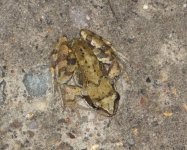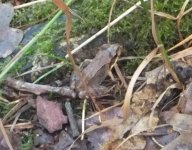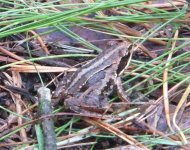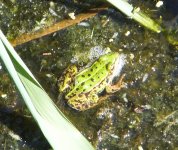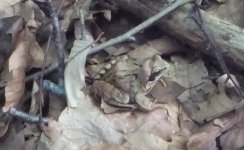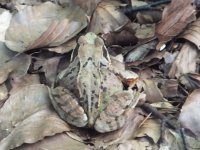Sangahyando
Well-known member

I'm still struggling to understand the identification of reptiles and amphibians. I've recently encountered these fellows in the state of Mecklenburg-Vorpommern, but am not entirely certain of the IDs I made. All pictures were taken in the same area, only a few days apart. All of the images are cropped for the usual reasons.
I think the first one is a Common Frog (Rana temporaria). It was mid-sized and hopping along the road at night.
The second one I think is another Common Frog. This one was puny, at most 2 cm in length.
I suspect the third one is a Moor Frog (Rana arvalis) due to its lively pattern. It was about the same size as #2, found on the same track.
The critters seen in the moat in the fourth picture must be water frogs (Pelophylax sp.), but which one? They were around the length of the large Great Diving Beetle Dytiscus marginalis swimming among them, the largest ones perhaps being slightly bigger. This crop of the picture only shows one, but I photographed several of them on three occasions.
Any help with ID and helpful tips would be much appreciated.
- Andy
I think the first one is a Common Frog (Rana temporaria). It was mid-sized and hopping along the road at night.
The second one I think is another Common Frog. This one was puny, at most 2 cm in length.
I suspect the third one is a Moor Frog (Rana arvalis) due to its lively pattern. It was about the same size as #2, found on the same track.
The critters seen in the moat in the fourth picture must be water frogs (Pelophylax sp.), but which one? They were around the length of the large Great Diving Beetle Dytiscus marginalis swimming among them, the largest ones perhaps being slightly bigger. This crop of the picture only shows one, but I photographed several of them on three occasions.
Any help with ID and helpful tips would be much appreciated.
- Andy




